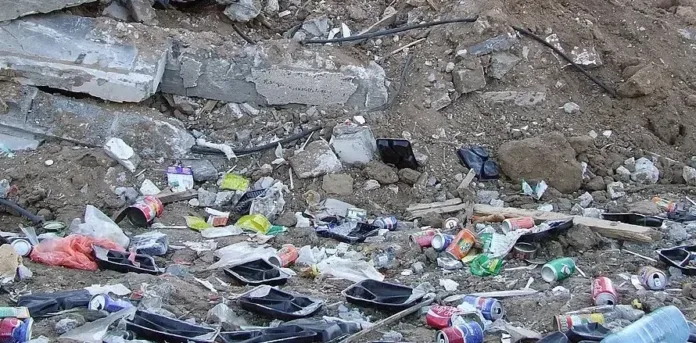Overcrowded camps in southern Gaza suffer from diseases, malnutrition, and dwindling aid supplies
In the sweltering heat of southern Gaza, displaced families are facing an escalating public health crisis, with raw sewage and overflowing trash compounding their suffering. Amidst the devastation of war, aid remains blocked, and medical supplies are running out, exacerbating the conditions in makeshift encampments like Al Mawasi.
Louise Wateridge, Senior Emergency Officer at UNRWA, described the dire situation unfolding in the region. “The trash is just out of control. The sewage, the rodents, the pests, the rats, the mice – all of these animals are going between the structures that people are sheltering in,” Wateridge told UN News. The combination of heat, unsanitary conditions, and a lack of clean water is taking its toll, as disease begins to spread rapidly among the population.
The humanitarian crisis is particularly severe for children, many of whom are malnourished and suffering from the harsh conditions. Families, already worn down by months of conflict, have no choice but to live in overcrowded camps, where the shortage of basic amenities such as food, water, and healthcare is pushing them to the brink. “There is not enough medicine,” Wateridge added, as UNRWA teams struggle with dwindling resources, including only ten days’ worth of pesticides to combat the rising threat of pests and disease.
The situation is made worse by the destruction of Gaza’s infrastructure. According to the UN’s humanitarian coordination office (OCHA), more than 30 vehicles essential for waste management, water supply, and sewage maintenance were destroyed by Israeli airstrikes between 21 and 22 April. This has further disrupted the already strained public health systems and deepened the humanitarian crisis. At least 23 strikes have hit shelters housing displaced people, resulting in dozens of civilian casualties, including women, children, and those with disabilities.
Embed from Getty ImagesGaza’s health system is collapsing, with more than half of the remaining health facilities located in areas under evacuation orders, making it even more difficult for communities to access urgent care. There is also a severe shortage of medical supplies, equipment, and personnel, with hospitals overwhelmed by the growing number of casualties. As of 15 April, an estimated 420,000 people in Gaza have been displaced, many of them more than once due to the ongoing conflict.
The blockade of humanitarian aid into Gaza continues to make matters worse. The UN reports that for 52 consecutive days, vital aid has been blocked, with nearly half of the planned humanitarian missions in mid-April denied or impeded. Out of 42 aid missions coordinated with Israeli authorities, 20 were denied, and others faced delays or cancellations. This has led to a significant shortfall in the supplies needed to alleviate the suffering of those in Gaza.
UN agencies are also facing financial difficulties. As of 22 April, only $569 million had been disbursed out of the required $4.07 billion to meet the urgent needs of the three million people in Gaza and the West Bank, including East Jerusalem. The lack of funds and resources is putting immense strain on humanitarian operations, with many programmes at risk of shutting down if support does not increase.
The combination of blocked aid, dwindling resources, and deteriorating living conditions paints a grim picture for Gaza’s displaced families. With no end in sight to the conflict and the humanitarian space shrinking daily, the situation for those in Gaza grows increasingly desperate.
